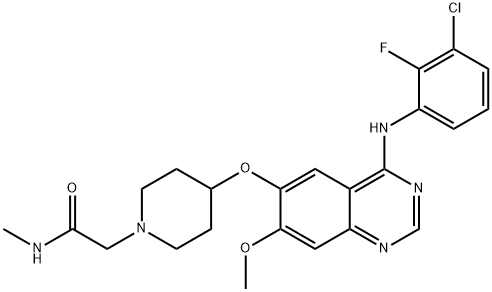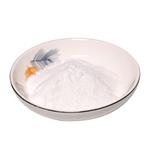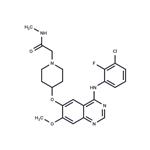Uses
AZD8931 is a novel potent reversible small molecule epidermal growth factor receptor, ERBB2 (HER2) and ERBB3 inhibitor with an IC50 of 4, 3, 4 nM, respectively.
Definition
ChEBI: A member of the class of quinazolines that is 4-amino-7-methoxyquinazoline in which the amino group has been substituted by a 3-chloro-2-fluorophenyl group and in which position 6 of the quinoline ring has been substituted by a {1-[2-(methylamino)-2-oxoeth
l]piperidin-4-yl}oxy group. Sapitinib is a dual tyrosine kinase inhibitor (TKI) of epithelial growth factor receptors (EGFR) HER2 and HER3.
Enzyme inhibitor
This signal transduction kinase inhibitor (FW = 473.94 g/mol; CAS 848942-61-0), also named 2-(4-[4-(3-chloro-2-fluorophenylamino)-7- methoxyquinazolin-6-yloxy]piperidin-1-yl)-N-methylacetamide, reversibly inhibits EGFR (IC50 = 4 nM), erbB2 (IC50 = 3 nM), and erbB3 (IC50 = 4 nM) phosphorylation in cells. In proliferation assays, AZD8931 is significantly more potent than gefitinib or lapatinib in specific squamous cell carcinoma of the head and neck and non-small cell lung carcinoma cell lines. In vivo, AZD8931 inhibits xenograft growth in a range of models, while significantly affecting EGFR, erbB2, and erbB3 phosphorylation and downstream signaling pathways, apoptosis, and proliferation. In EGF and HRG ligand-driven cell systems, AZD8931 is more potent than gefitinib or lapatinib. Metabolic disposition of AZD8931.





